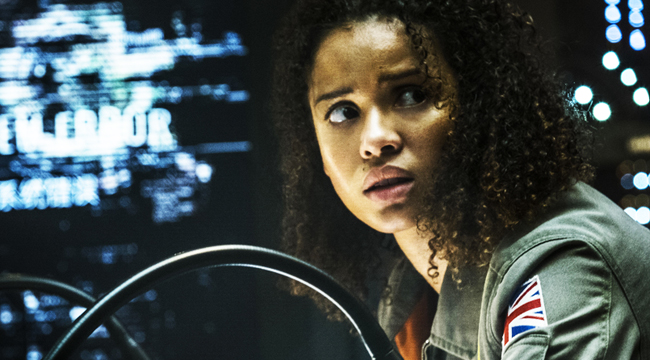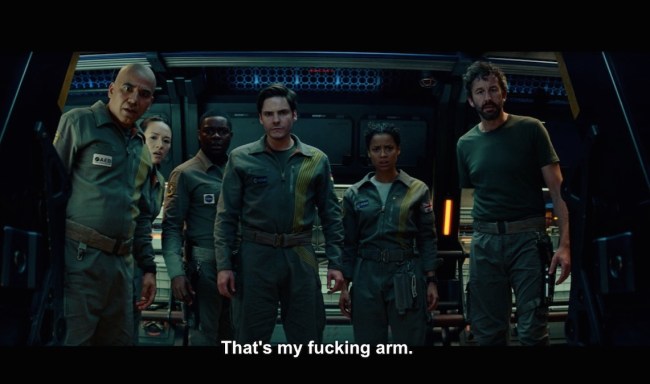
If The Cloverfield Paradox went by any other name, like, say, Worms In Space, it would be relegated to direct-to-home video status. But because this is A Cloverfield Movie — the third overall, after the clever found footage original and the far superior 10 Cloverfield Lane — it got the (very expensive) Super Bowl commercial treatment and a surprise late-night release on Netflix. Paradox pulled a Beyoncé, except it’s hard to make Lemonade out of this lemon.
Directed by Julius Onah, The Cloverfield Paradox begins on Earth, where Ava (the wonderful Gugu Mbatha-Raw) and Michael (Roger Davies) are coping with the death of their children. But mostly the film takes place in space, aboard the Cloverfield Station. The ship’s mission: use a particle accelerator called The Shepherd to provide Earth with a limitless supply of energy. But — this is a big but — if things go wrong: monsters. (Or in the words of the always-welcome Donal Logue, “Monsters, demons, and beasts from the sea [may emerge], not just here, but in the past, future, and other dimensions.”) The Cloverfield’s crew is made up of Ava, Evil-Looking Guy with Glasses, Zhang Ziyi, David Oyelowo, and… others? The stock characters fail to stand out, with the exception of Elizabeth Debicki’s icy Mina and Chris O’Dowd’s Mundy, who in the best scene of the movie — spoilers, but it must be mentioned — loses his arm. This, in turn, leads to the best line of the movie.

The Cloverfield Paradox could have been campy fun, and at times, especially when worms are involved, it is. There’s even a germ of a good idea in Oren Uziel’s script: a sci-fi horror movie where the Earth vanishes? That opens up a lot of mind-bending opportunities. But with its haphazard plot twists and muddy motivations, Paradox mostly takes the boring parts from Life, Alien: Covenant, Event Horizon, and Interstellar (yes, people cry looking at screens), with a hint of one of the lesser Black Mirror episodes, and adds the word “Cloverfield.”
The monster material below feels separate from the events aboard the claustrophobic spaceship, and when the action does move to Earth, the little reason to care about what’s happening depends on how invested you are in Cloverfield mythology. The Cloverfield Paradox is caught between existing on its own, as a movie you can enjoy without having seen the other two films, and answering for what came before. It’s too safe to take risks, and the one go-for-broke scene is too little, too late. (I’m also curious to see where the franchise goes from here. As someone who likes Cloverfield and 10 Cloverfield Lane, it would be a shame if the series ended on this sour note though a fourth film, set during World War II, is said to be in the works.) The most interesting thing about Paradox isn’t the movie itself, but what it means for future titles.
Netflix acquired The Cloverfield Paradox from Paramount after the film’s budget reportedly ballooned to $40 million, compared to Cloverfield‘s $25 million and 10 Cloverfield Lane‘s $15 million. The streaming service, which plans to spend $8 billion on content in 2018 alone, seemingly hoped that a wave of social media buzz — a blockbuster released in a few hours, announced during the most-watched event of the year, the Super Bowl — would distract from the quality of the film. It worked, to an extent. The “stealth release a big-budget movie” model is still new enough that The Cloverfield Paradox won’t be remembered as a two-star movie, it will be recalled as the Super Bowl movie, and possibly one that opens up new avenues to studios. Don’t have faith in your $100 million tentpole anymore? See if Netflix (or Hulu or Amazon, which is ditching prestige for popcorn) is interested. After the equally critically reviled (but still very popular) Bright and now this, maybe the third time will be the charm?






